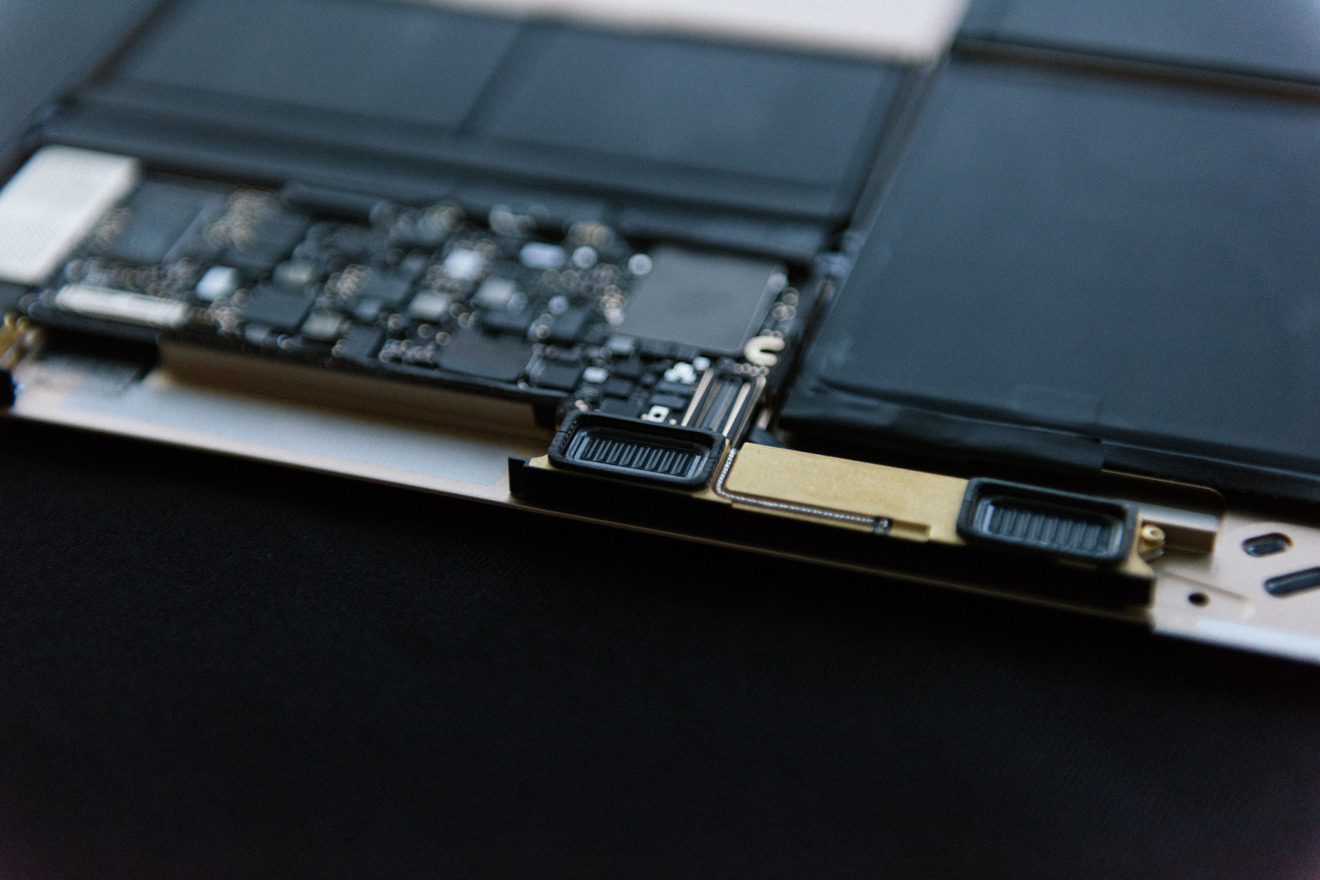In a rare interview, Apple marketing head Phil Schiller and VP of Mac and iPad engineering John Ternus discussed subjects like the intense collaboration behind products like the MacBook, why Apple refuses to name most suppliers, and the flow philosophy behind the company's upcoming "spaceship" campus.
One of the lesser-known inventions in the 12-inch Retina MacBook is the "speaktenna," which attaches the wireless antenna to the outside of the speaker module, Ternus explained to Mashable in the interview published Wednesday. The company realized that it couldn't do separate antenna and speaker systems well in such an ultra-compact machine, since both components need space to resonate.
Instead the company had the antenna and speaker teams collaborate and learn from each other, Ternus noted. Schiller added that this reflects the reorganization Steve Jobs and designer Jony Ive put in place when Jobs returned as CEO in 1997, joining the engineering and industrial design teams "at the hip." The groups "think up solutions to problems together as the disciplines are merged into a seamless process," Schiller said.
On the matter of Apple refusing to talk about suppliers, the executive commented that it's partly because the company sometimes uses multiple suppliers for a single part, and doesn't want to explain differences.
In other cases, it doesn't want to announce when it switches to a new firm. A major reason is that suppliers are often asked to create custom hardware for Apple.
"The most common scenario is simply that what we got from a supplier basically has been created so uniquely for Apple that implying it's an off-the-shelf part like others may get would be really misleading," Schiller said.
Asked about whether not the shape of Campus 2 might not impede the kind of collaboration seen on the MacBook — namely if one team was on an opposite side of the ring from another — Schiller suggested that the situation was "quite the opposite."
"Everything" about the new complex is designed to spur collaboration, he suggested. The internal and external surfaces of the structure are hallways, and the open area in the middle is designed to push people to travel through it via pathways, even running trails. There are also said to be "large, open spaces" between interior seating areas, with the idea of encouraging work in communal areas.
Schiller separately took a swipe at hybrid PCs like Microsoft's Surface Book and Surface Pro 4, which can serve as both tablets and conventional laptops.
"There certainly are more offerings today, more people trying to create a market, but based on all the data that I've been able to see, it is still incredibly small and niche and may not be growing to anything significant," he said. "Time will tell."
 Roger Fingas
Roger Fingas







-m.jpg)






 Charles Martin
Charles Martin
 Christine McKee
Christine McKee
 Wesley Hilliard
Wesley Hilliard
 Malcolm Owen
Malcolm Owen
 Andrew Orr
Andrew Orr
 William Gallagher
William Gallagher
 Sponsored Content
Sponsored Content








18 Comments
Hmm...this is the second interview in the span of a few weeks with this hardware VP John Ternus. I don't think the people Apple chooses to put in front of the media is by accident. I think it's also interesting that in both of these behind the scenes interviews Dan Riccio (SVP of hardware) is nowhere to be found. He also wasn't featured in any of the product intro videos, those were all narrated by Jony Ive. This kind of stuff always intrigues me as we know Apple doesn't let just any employee speak with the media.
Hmm...this is the second interview in the span of a few weeks with this hardware VP John Ternus. I don't think the people Apple chooses to put in front of the media is by accident. I think it's also interesting that in both of these behind the scenes interviews Dan Riccio (SVP of hardware) is nowhere to be found. He also wasn't featured in any of the product intro videos, those were all narrated by Jony Ive. This kind of stuff always intrigues me as we know Apple doesn't let just any employee speak with the media.
Good observation.
Btw, John Ternus is one of the inventors listed on the iPad Smart Cover patents along with Jony Ive and others.
I think and I hope the antenna design is what's coming for iPhone 7... no more ugly stupid band. That alone would be worth the upgrade for me. ( And if we could get rid of the Qualcomm baseband and go back to Infineon as well as ditching Samsung SoC would be great )
[quote name="ksec" url="/t/189802/apples-phil-schiller-john-ternus-talk-design-secrecy-spaceship-campus-2#post_2797659"]I think and I hope the antenna design is what's coming for iPhone 7... no more ugly stupid band. That alone would be worth the upgrade for me. ( And if we could get rid of the Qualcomm baseband and go back to Infineon as well as ditching Samsung SoC would be great )[/quote] Ugly? Stupid? Think you could design better? I think that funtional elements done carefully can have their own beauty. You start by accepting that they may be necessary or they wouldn't be there. They are expensive to produce that way, after all. But maybe you don't know anything about function, and engineering for it.